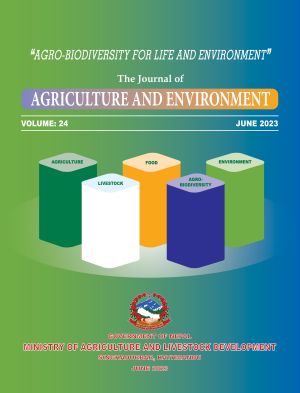Phytochemical Screening and Allelopathic Potential of Important Medicinal Plants Used by Dhimal Community in Urlabari Municipality
DOI:
https://doi.org/10.3126/aej.v24i01.58192Keywords:
Ailment, ethnobotanicals, fidelity level, inhibition, plumule, radicleAbstract
A study was conducted to document the major ethnobotanicals used against different ailments from Dhimal community of Urlabari Municipality. Deductive research approach employed through household survey using semi-structured questionnaire with 115 respondents for research work. Out of 23 documented plants, Cuscuta reflexa Roxb., Mimosa pudica L. , Azadirachta indica A. Juss, Achyranthes aspera L. and Acorus calamus L. were screened for further phytochemical analysis based on fidelity level. Five treatments maintained as 3 different concentrations (5, 10, and 15% of stock solution), and control were arranged in a completely randomized design with three replications for evaluating allelopathic potential where selected botanical extracts on germination, radical, and plumule growth of wheat seedlings were examined under invitro condition. Mimosa pudica L. had the highest alkaloid (15.39%), Cuscuta reflexa Roxb. had the highest terpenoid (9.17%) and Acorus calamus L. had the highest saponin (5.49%) when calculated via gravimetric method. Germination, radical and plumule growth found under control treatment were 3.24ab±0.09, 2.94a ±0.09cm and 2.70a ±0.17cm respectively. The stock solution of Acorus calamus L. with 15% concentration extract resulted in the maximum reduction of radicle length (1.14e ±0.22cm) and plumule length (1.04h ±0.17cm), along with heavily controlled germination (1.05f ±0.17) of wheat seedlings. Thus, Acorus calamus L. proved the highest allelopathic potential on wheat seedling growth indicating further investigation on other crops.




